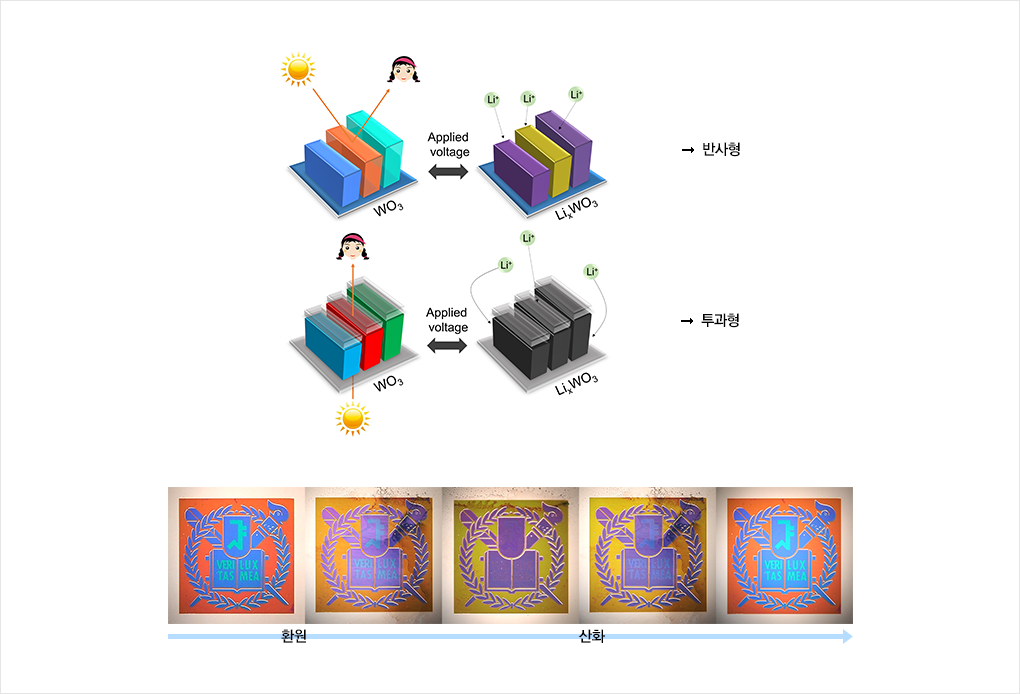Simple structure that can be applied to full-color reproduction, optical information encryption, and display

Professor Byoungho Lee
SNU College of Engineering (Dean Kookheon Char) announced on July 16 that a joint research team consisting of Professor Byoungho Lee of the Department of Electrical and Computer Engineering, Professor Taek Dong Chung of the Department of Chemistry, and Professor Ho-Jung Sun of Kunsan National University's Department of Materials Science and Engineering has developed a display device using nanostructured tungsten trioxide thin films. This is a result of research that is one step closer to reducing production cost and electricity consumption as well as developing displays that are thinner than ever before.
Electrochromism is a phenomenon in which the color of materials changes due to electrochemical reactions according to voltage, and each electrochromic material is known to have its own color of expression according to oxidation and reduction. In the case of tungsten trioxide, a representative electrochromic material, lithium ions are colored dark blue as they are injected into the material through a reduction voltage in a transparent state, which can be returned to a transparent state by extracting lithium ions through an oxidation voltage.
Many studies have been conducted to use this phenomenon to change color to lower voltage in displays, but it has been difficult to express various colors and control intensity due to limitations that cannot be discolored to colors other than blue.
To solve this problem, Byoungho Lee's joint research team developed a photonic device that can reproduce various colors by combining nanometer-thick tungsten trioxide film, roughly 1/500th the thickness of adult hair, into semiconductors and metals.
Instead of using a complex structure, they have created a tungsten trioxide structure stacked on top of a silicon substrate and reproduced various colors of light reflected according to its thickness, and based on the principle that the reflected light changes to different colors through oxidation and reduction voltage, it confirmed the possibility of display applications.
It also succeeded in reproducing RGB (red, green, and blue) color pixels that can express about 94% of the color area used in conventional displays by combining the tungsten trioxide film with nanometer-thick metal and controlling the intensity by voltage. This photonic device is a simple layered structure that is less than 200 nanometers thick and does not require voltage to maintain color, which is expected to help significantly the development of low-cost, ultra-thin, and low-power displays.
"Through this study, we have taken a step closer to developing full-color display devices using electrochromic materials," said Dr. Yohan Lee, who led the experiment. "Securing improved device-driven reversibility and response speed is the key to practical use," he added.
The research findings were published online in the international journal <Nano Letters> that is published by the American Chemical Society (ACS) on July 6.

Figure Nanophotonic Device Using Electrochromic Tungsten Trioxide Thin Film.
(Above) Mechanism of element operation: change color by injecting or extracting lithium ions into or out of tungsten trioxide through an applied reduction and oxidation voltage (reflective type) or by adjusting color intensity (transparent type)
(Below) Optical information encryption device that can hide and restore letters by reducing and oxidizing tungsten trioxide
For further information, please contact Prof. Byoungho Lee.


